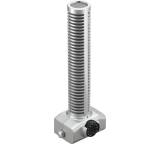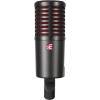Beliebte Filter: Anschluss
746 Ergebnisse entsprechen den Suchkriterien
-

Gut
1,7
Rode Microphones NT1-A
- Typ: Instrumentenmikrofon, Gesangsmikrofon
- Technologie: Kondensator
- Richtcharakteristik: Niere
Zum Produkt
-

Gut
1,9
Panasonic VW-VMS 10 E
- Typ: Kamera-Mikrofon
- Technologie: Kondensator
- Richtcharakteristik: Stereo, Niere
Zum Produkt
-

Sehr gut
1,0
Austrian Audio OC707
- Typ: Gesangsmikrofon
- Technologie: Kondensator
- Richtcharakteristik: Niere
-

Sehr gut
1,5
Boya BY-PM 500 W
- Typ: Funkmikrofon, Podcastmikrofon, Tischmikrofon
- Technologie: Kondensator
- Richtcharakteristik: Niere, Omnidirektional (Kugel)
-

Sehr gut
1,0
MSI Immerse GV60
- Typ: Podcastmikrofon, Tischmikrofon
- Technologie: Kondensator
- Richtcharakteristik: Stereo, Bidirektional (Acht), Niere, Omnidirektional (Kugel)
-

Sehr gut
1,3
Audio-Technica AT875R
- Typ: Reportermikrofon, Richtmikrofon
- Technologie: Elektret, Kondensator
- Richtcharakteristik: Superniere
Zum Produkt
-
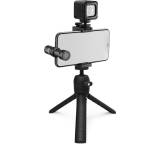
Sehr gut
1,5
Rode Microphones Vlogger Kit iOS Edition
- Typ: Handy-Mikrofon, Richtmikrofon
- Technologie: Elektret, Kondensator
- Richtcharakteristik: Niere
-
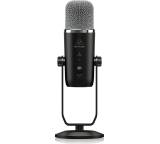
Gut
1,7
Behringer Big Foot
- Typ: Podcastmikrofon, Tischmikrofon
- Technologie: Kondensator
- Richtcharakteristik: Stereo, Bidirektional (Acht), Niere, Omnidirektional (Kugel)
-
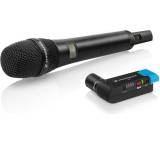
Sehr gut
1,3
Sennheiser AVX-835
- Typ: Kamera-Mikrofon, Funkmikrofon
- Technologie: Dynamisch
- Richtcharakteristik: Niere
Zum Produkt
-

Sehr gut
1,4
Zoom SSH-6
- Typ: Kamera-Mikrofon, Richtmikrofon
- Richtcharakteristik: Stereo, Superniere, Bidirektional (Acht)
Zum Produkt
-

Sehr gut
1,5
iCON Cocoon
- Typ: Gesangsmikrofon
- Technologie: Kondensator
- Richtcharakteristik: Niere
-

Gut
2,0
iCON Martian
- Typ: Gesangsmikrofon
- Technologie: Kondensator
- Richtcharakteristik: Niere
-

Sehr gut
1,4
Warm Audio WA-47
- Typ: Instrumentenmikrofon, Gesangsmikrofon
- Technologie: Röhre, Kondensator
- Richtcharakteristik: Bidirektional (Acht), Niere, Omnidirektional (Kugel)
Zum Produkt
-

Sehr gut
1,3
Audio-Technica AT2035
- Typ: Instrumentenmikrofon, Gesangsmikrofon
- Technologie: Kondensator
- Richtcharakteristik: Niere
Zum Produkt
-
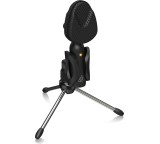
Mangelhaft
5,0
Behringer BV4038
- Typ: Podcastmikrofon, Tischmikrofon
- Technologie: Elektret, Kondensator
- Richtcharakteristik: Superniere
-

Sehr gut
1,5
Blue Microphones Yeti X World of Warcraft Edition
- Typ: Podcastmikrofon, Tischmikrofon
- Technologie: Kondensator
- Richtcharakteristik: Stereo, Bidirektional (Acht), Niere, Omnidirektional (Kugel)
-
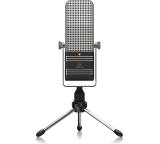
Mangelhaft
5,0
Behringer BV44
- Typ: Podcastmikrofon, Tischmikrofon
- Technologie: Elektret, Kondensator
- Richtcharakteristik: Superniere
-
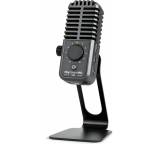
Gut
2,0
IK Multimedia iRig Stream Mic USB
- Typ: Podcastmikrofon, Tischmikrofon, Gesangsmikrofon
- Technologie: Elektret, Kondensator
- Richtcharakteristik: Niere
-

Sehr gut
1,3
Shure PGX Beta 87A
- Typ: Funkmikrofon, Gesangsmikrofon
- Technologie: Kondensator
Zum Produkt
-
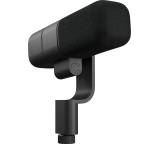
Sehr gut
1,5
Logitech Blue Sona
- Typ: Podcastmikrofon
- Technologie: Dynamisch
- Richtcharakteristik: Superniere
-

Sehr gut
1,3
Beyerdynamic TG D71c
- Typ: Instrumentenmikrofon
- Technologie: Elektret, Kondensator
- Richtcharakteristik: Niere
Zum Produkt
-
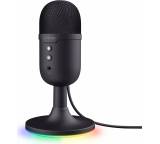
Gut
1,6
Trust GXT 236 Yami
- Typ: Tischmikrofon
- Technologie: Kondensator
- Richtcharakteristik: Niere
Zum Produkt
-

Sehr gut
1,3
Rode Microphones NT1
- Typ: Instrumentenmikrofon, Gesangsmikrofon
- Technologie: Kondensator
- Richtcharakteristik: Niere
Zum Produkt
-
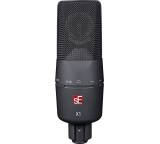
Sehr gut
1,3
SE Electronics X1
- Typ: Instrumentenmikrofon, Gesangsmikrofon
- Technologie: Kondensator
- Richtcharakteristik: Niere
Zum Produkt
-

ohne Endnote
IK Multimedia iRig Mic Cast HD
- Typ: Handy-Mikrofon
- Technologie: Elektret, Kondensator
- Richtcharakteristik: Bidirektional (Acht), Direktional (Keule)
-

Sehr gut
1,5
SE Electronics X1 A
- Typ: Instrumentenmikrofon, Gesangsmikrofon
- Technologie: Kondensator
- Richtcharakteristik: Niere
Zum Produkt
-

Sehr gut
1,5
SE Electronics sE2200
- Typ: Instrumentenmikrofon, Gesangsmikrofon
- Technologie: Kondensator
- Richtcharakteristik: Niere
Zum Produkt
-
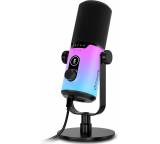
Gut
1,7
FDUCE D20
- Typ: Podcastmikrofon, Tischmikrofon
- Technologie: Dynamisch
- Richtcharakteristik: Niere
-
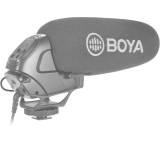
Gut
1,8
Boya BY-BM3031
- Typ: Kamera-Mikrofon, Richtmikrofon
- Technologie: Kondensator
- Richtcharakteristik: Superniere
-

Gut
1,6
AKG C3000
- Typ: Instrumentenmikrofon, Gesangsmikrofon
- Technologie: Kondensator
- Richtcharakteristik: Niere
Zum Produkt
-

ohne Endnote
Comica BoomX-D2 Pro
- Typ: Kamera-Mikrofon, Funkmikrofon, Handy-Mikrofon, Ansteckmikrofon
- Richtcharakteristik: Omnidirektional (Kugel)
- Anschluss: Klinke (3,5 mm), USB
-

Sehr gut
1,0
Lewitt LCT 640 TS
- Typ: Instrumentenmikrofon, Gesangsmikrofon
- Technologie: Kondensator
- Richtcharakteristik: Superniere, Bidirektional (Acht), Breite Niere, Niere, Omnidirektional (Kugel)
Zum Produkt
-

Sehr gut
1,3
AKG C414 XLS
- Typ: Instrumentenmikrofon, Gesangsmikrofon
- Technologie: Kondensator
- Richtcharakteristik: Bidirektional (Acht), Breite Niere, Hyperniere, Niere, Omnidirektional (Kugel)
Zum Produkt
-

Gut
2,0
Thomann The t.bone Sync 2
- Typ: Kamera-Mikrofon, Funkmikrofon
- Technologie: Kondensator
- Anschluss: Klinke (3,5 mm)
-

Gut
1,7
Warm Audio WA-47jr
- Typ: Instrumentenmikrofon, Gesangsmikrofon
- Technologie: Kondensator
- Richtcharakteristik: Bidirektional (Acht), Niere, Omnidirektional (Kugel)
Zum Produkt
-
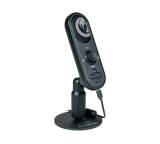
Befriedigend
3,0
Nacon Mikrofon für Streaming
- Typ: Podcastmikrofon, Tischmikrofon
- Richtcharakteristik: Niere
- Anschluss: Kopfhörer-Anschluss, USB
-

Gut
1,7
AKG P120
- Typ: Podcastmikrofon, Gesangsmikrofon
- Technologie: Kondensator
- Richtcharakteristik: Niere
Zum Produkt
-

Gut
2,1
IK Multimedia iRig Mic
- Typ: Richtmikrofon
- Technologie: Kondensator
- Richtcharakteristik: Niere
Zum Produkt
-

Gut
1,6
Blue Microphones Snowball
- Typ: Richtmikrofon
- Technologie: Kondensator
- Richtcharakteristik: Direktional (Keule), Niere, Omnidirektional (Kugel)
Zum Produkt




